Aug 13 2017
Sunday – mix double – training racing
Spent most of the day running errands and doing some work in the garden. I grilled some nice steaks for lunch.
At the end of the afternoon we headed to the rowing club. Romana and I arrived earlier than the Masters Men’s Pair, so we took some time to check the rigging of our double Orca. All OK.
First a warming up and some training starts.
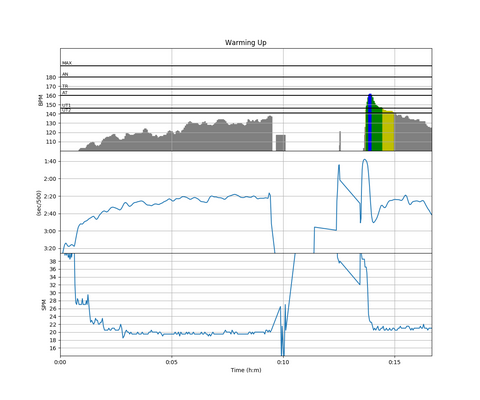
The high stroke rates in the beginning are our usual drill. Starting to row with arms only, then arms+body, then half slide, 3/4 slide, and finally on to full slide.
Pazdi and Krocan weren’t ready yet, so we did the first 500m with race start on our own.
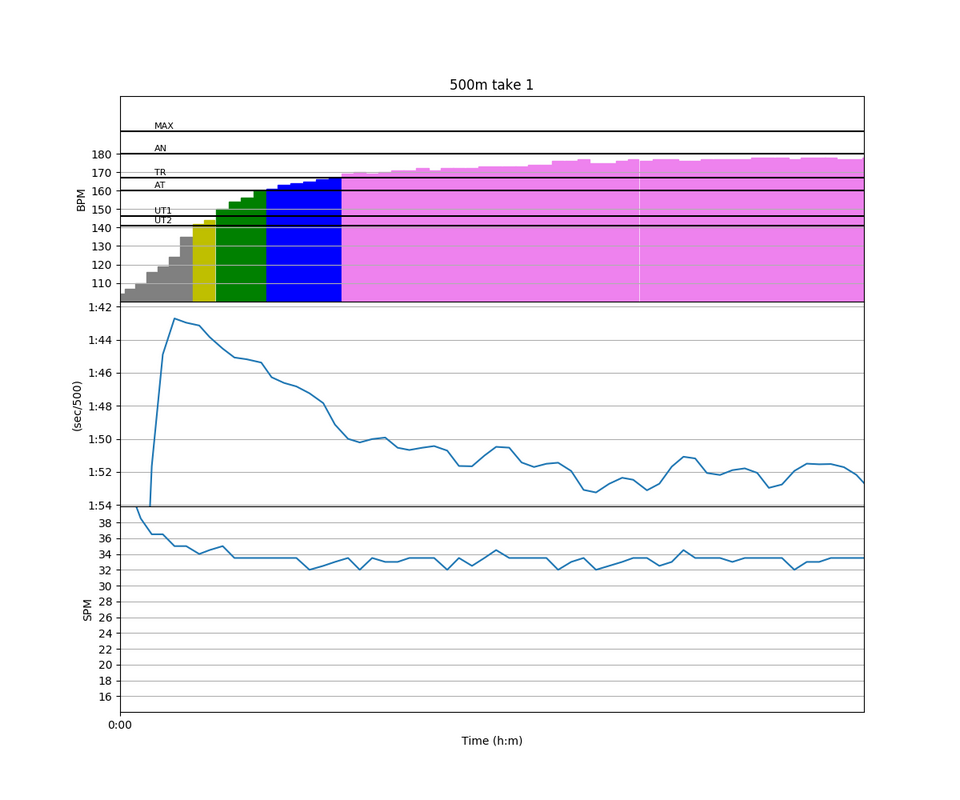
Then a longer rest paddle. A training start with Pazdi and Krocan next to us in the pair, and finally the second 500m. We lined up the boats and off we went. The pair was leading slightly out of the start and they managed to keep the lead all the way to the end. I called “go” with 200m to go and increased the stroke rate.
Romana is a “feel” rower. She doesn’t need any gadgets, is not very interested in looking at graphs and playing with data. But this time she wondered aloud whether the stroke rate increase had increased boat speed. Let’s check the graph.
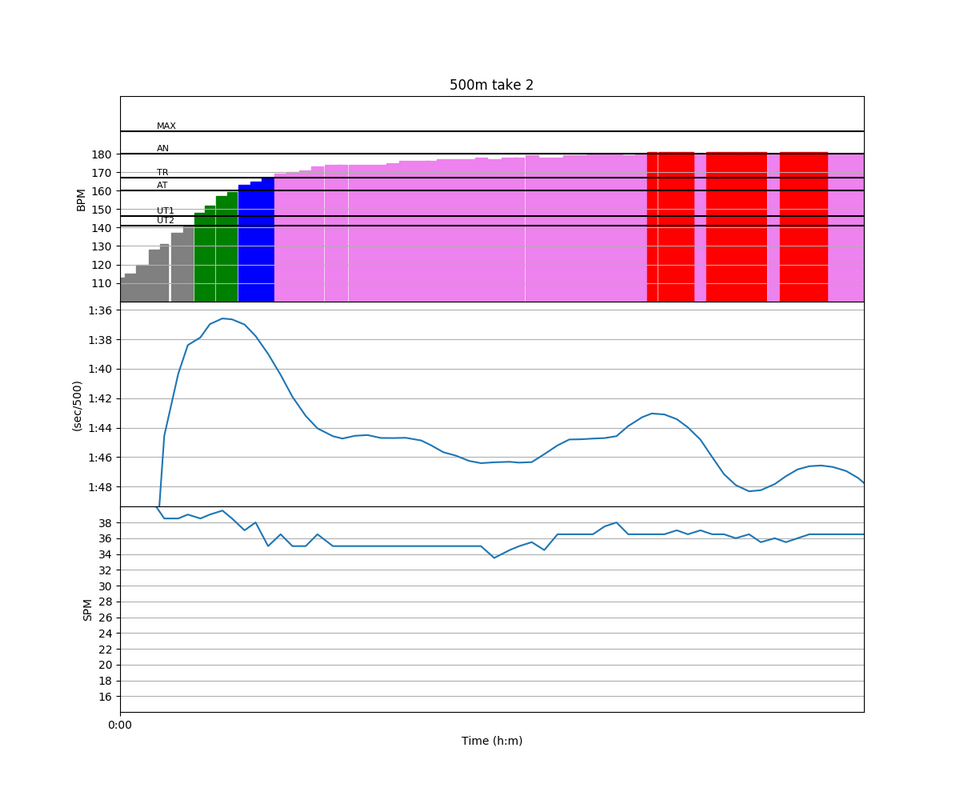
The static chart is not very easy for reading the stroke rate, so let’s look at the flex chart:
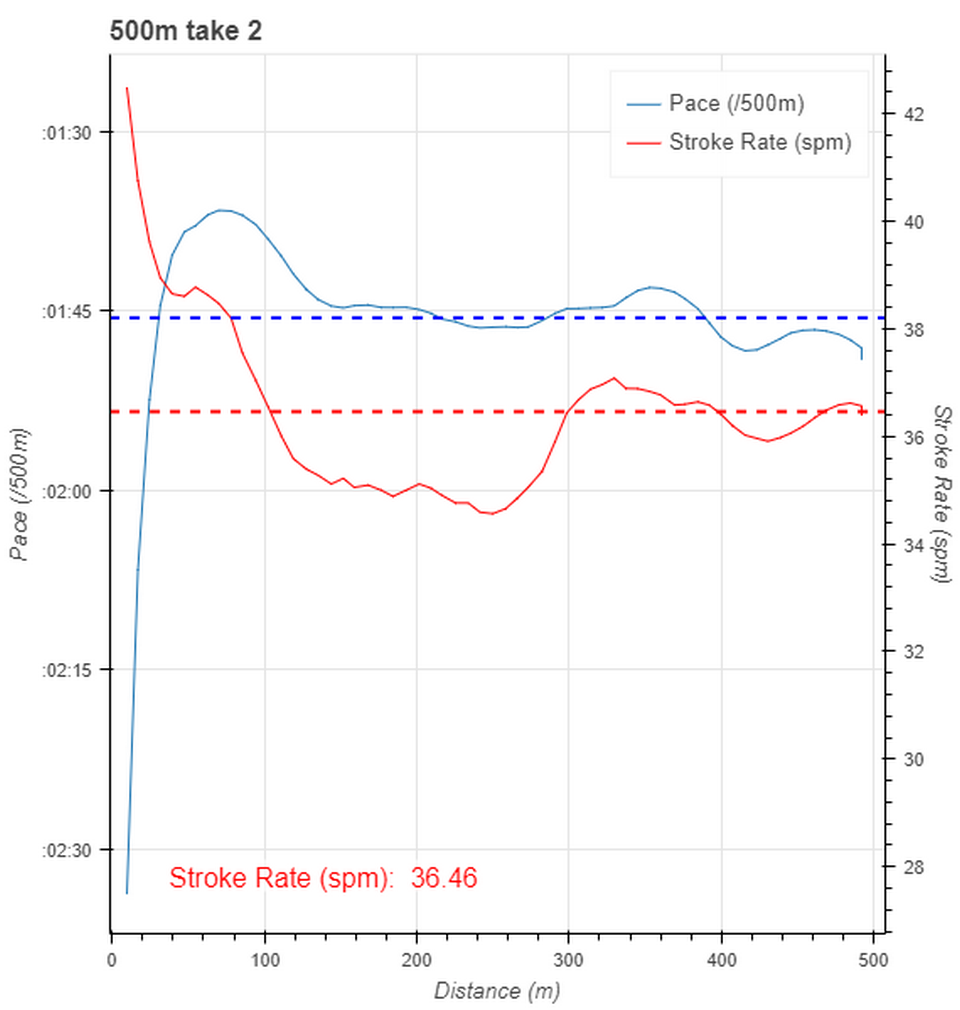
So yes, there seems to be an increase in pace. But what is interesting is that the pace seems to increase even more when we drop the stroke rate slightly after a few strokes of the sprint. Here are the comparison charts for 500m take 1 vs take 2:
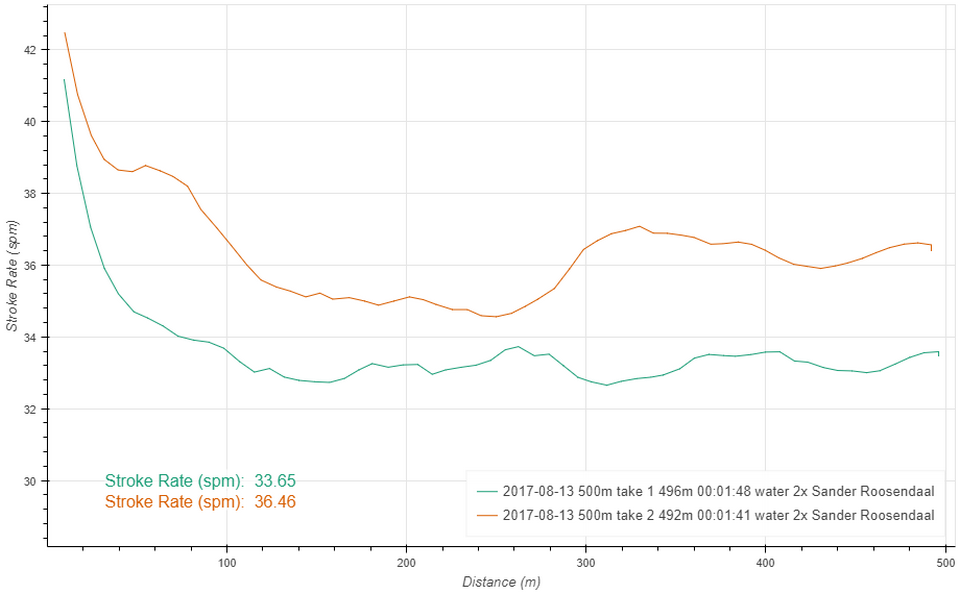
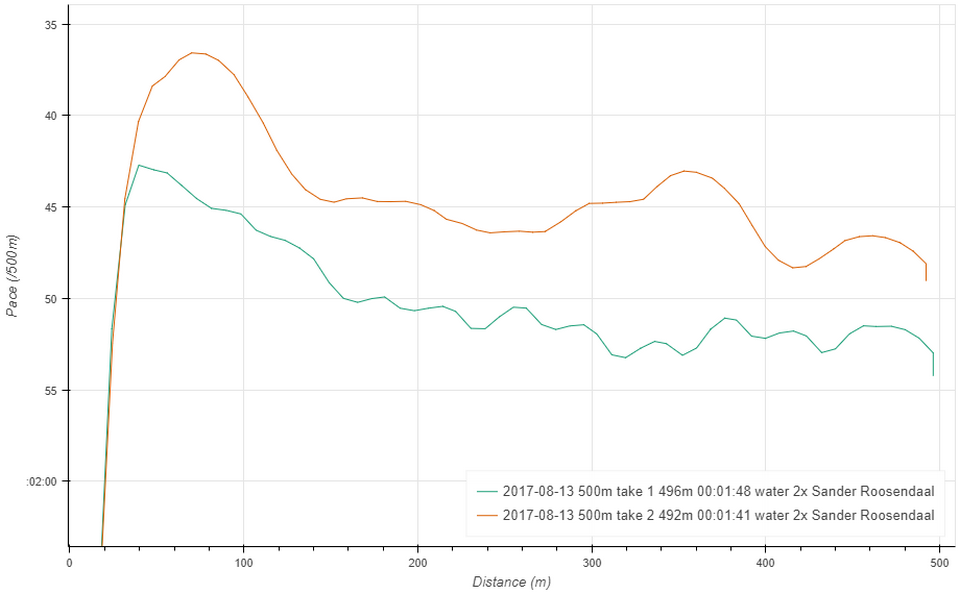
The second 500m was 5 seconds faster. We rowed it in identical conditions. Same part of the lake. Same weather (mirror flat water, no wind).
Then we did another loop of the lake together with the pair. On the 3km straight stretch from Sirka to Rokle, Romana and I rowed really well together. We fell into a nice rhythm at stroke rate 23. It didn’t feel hard at all. Our timing was just perfect, and we moved from rowing slightly behind the pair to passing them and finishing about 50m ahead of them. Nice row. Everything just clicked.
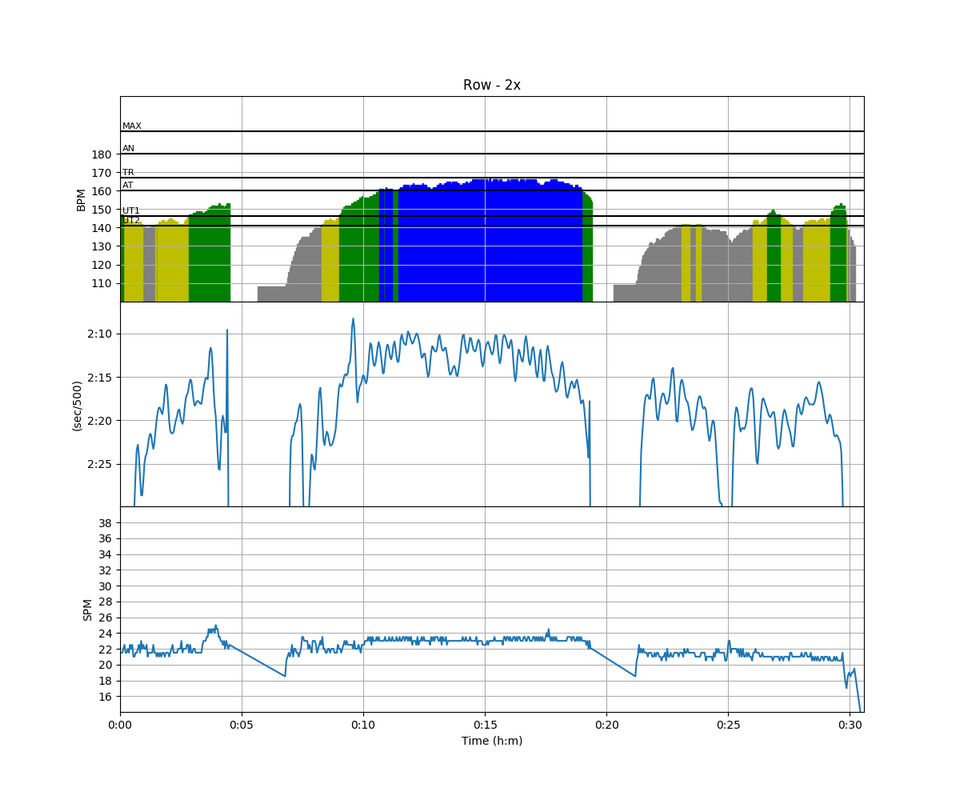
You can see how my heart rate nicely stays in the very narrow blue band during the entire 3km stretch (7 minutes to 19 minutes) . I was watching the SpeedCoach during the row and when the timing was perfect, the pace improved from 2:12 to 2:09. A few times the pace dropped to 2:16, but focusing on timing brought that back to 2:12 easily.
The pair were wondering what was going on. They were visibly working hard and we passed them so easily. That 3km stretch was the one that brought out the smiles.
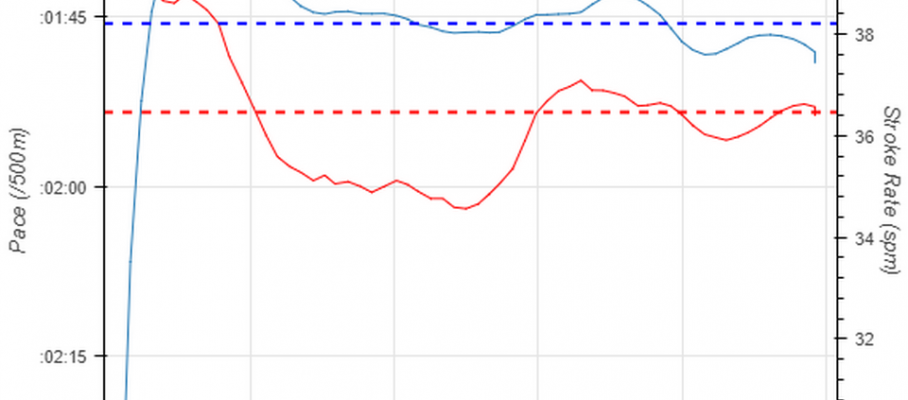



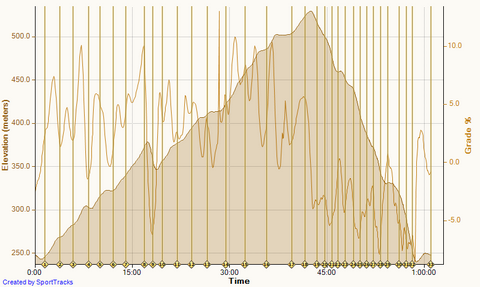
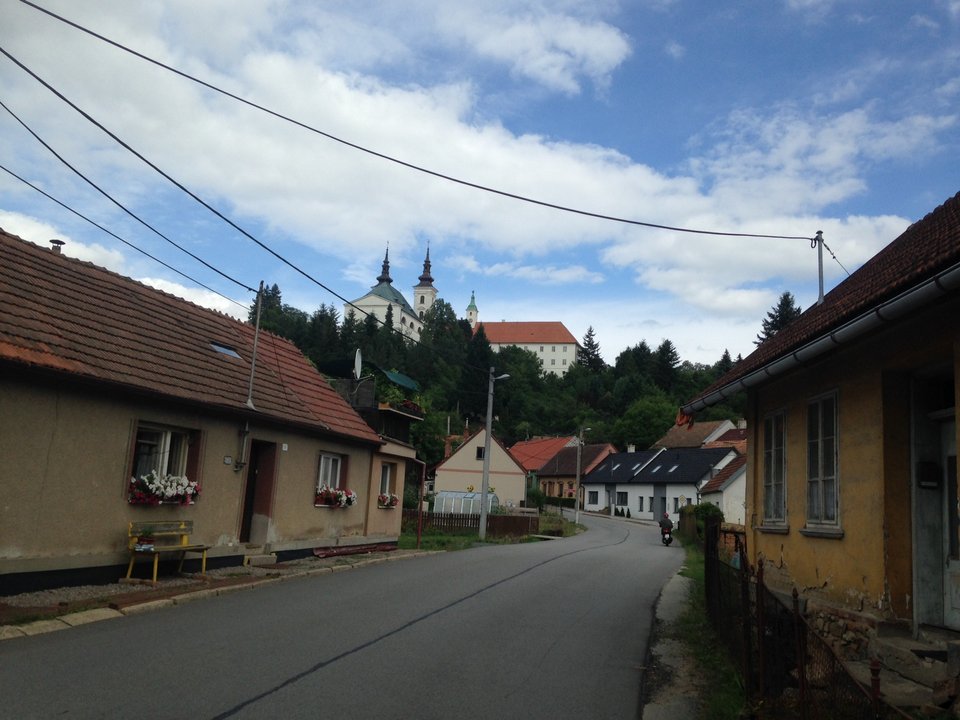
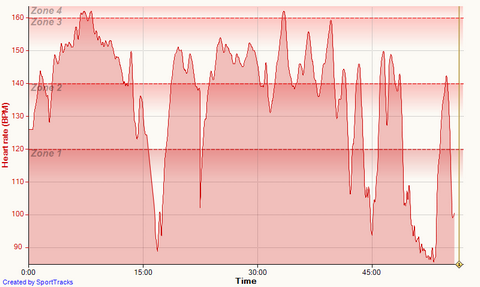
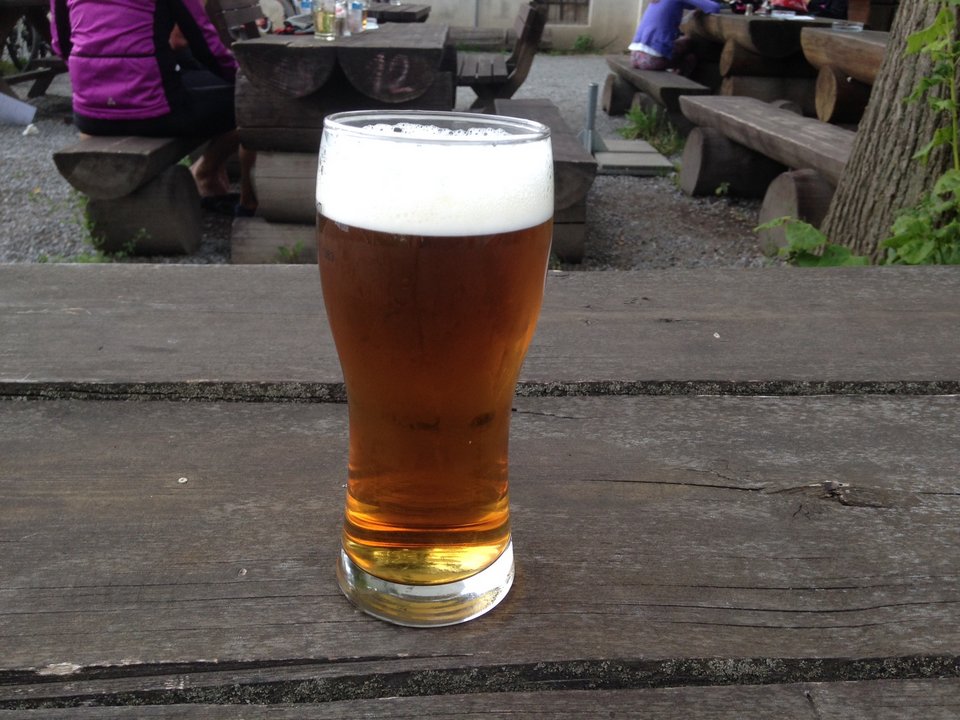
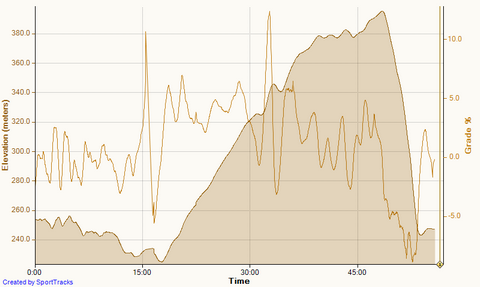
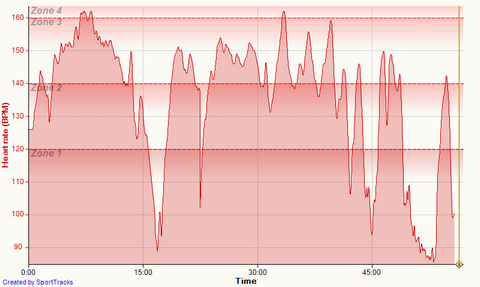
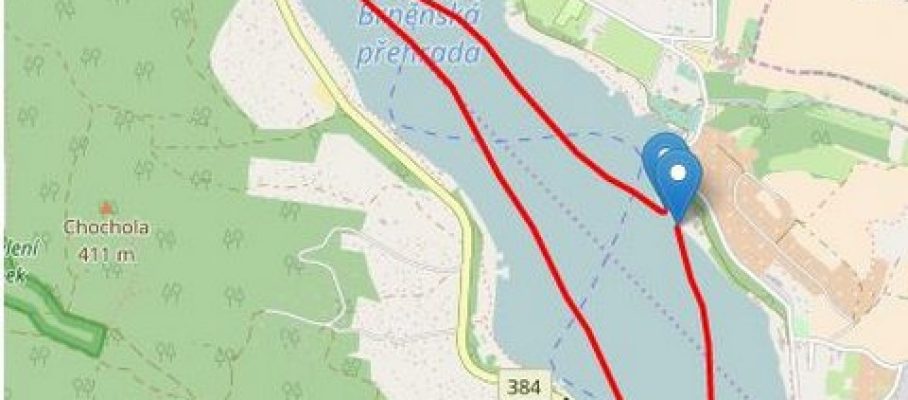
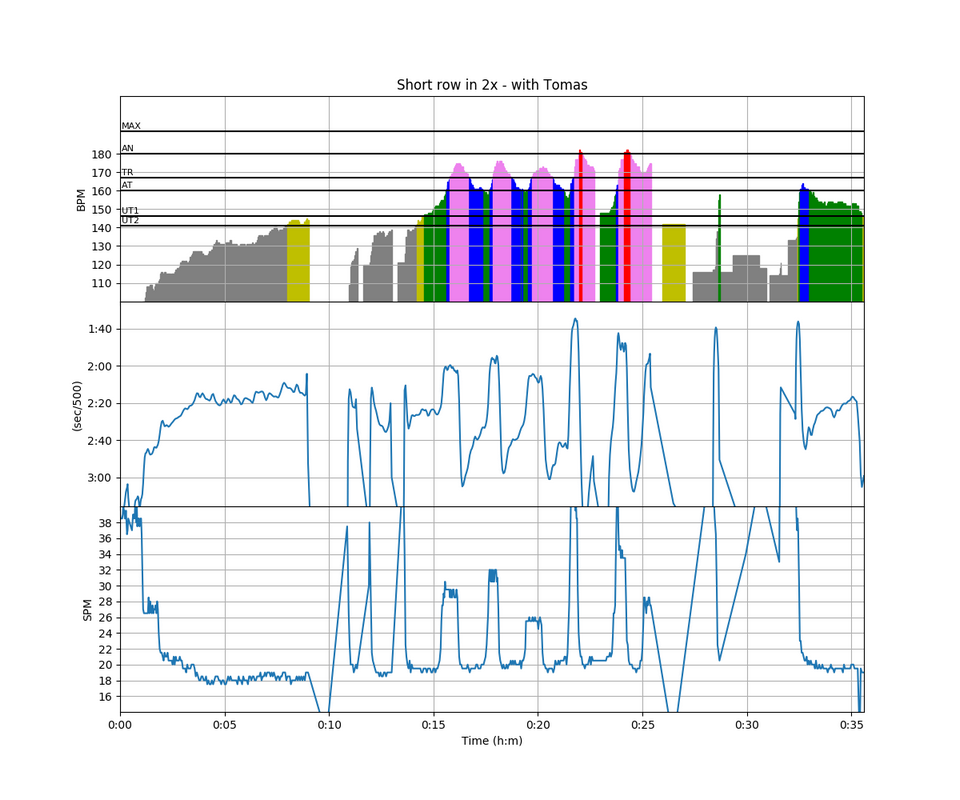
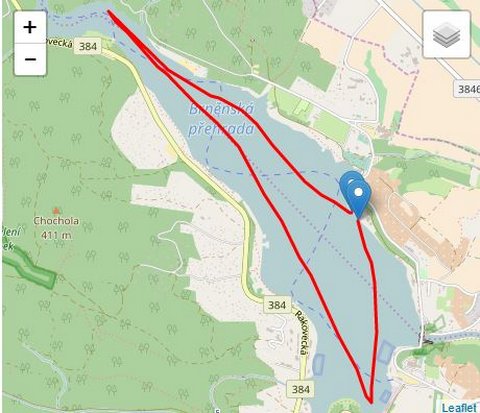
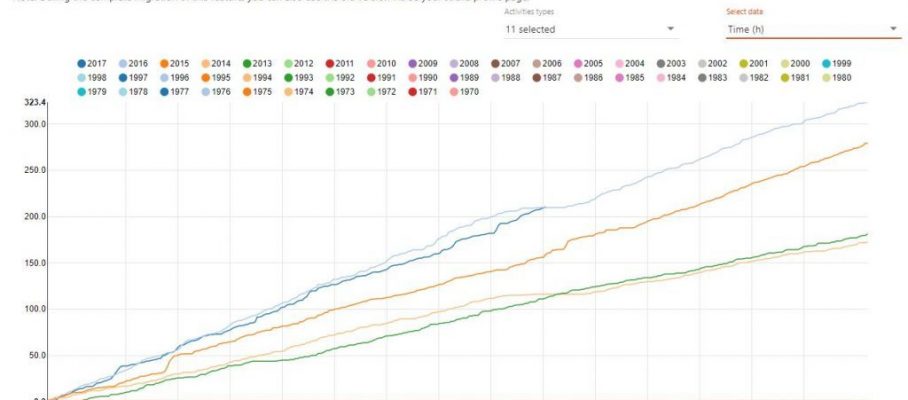
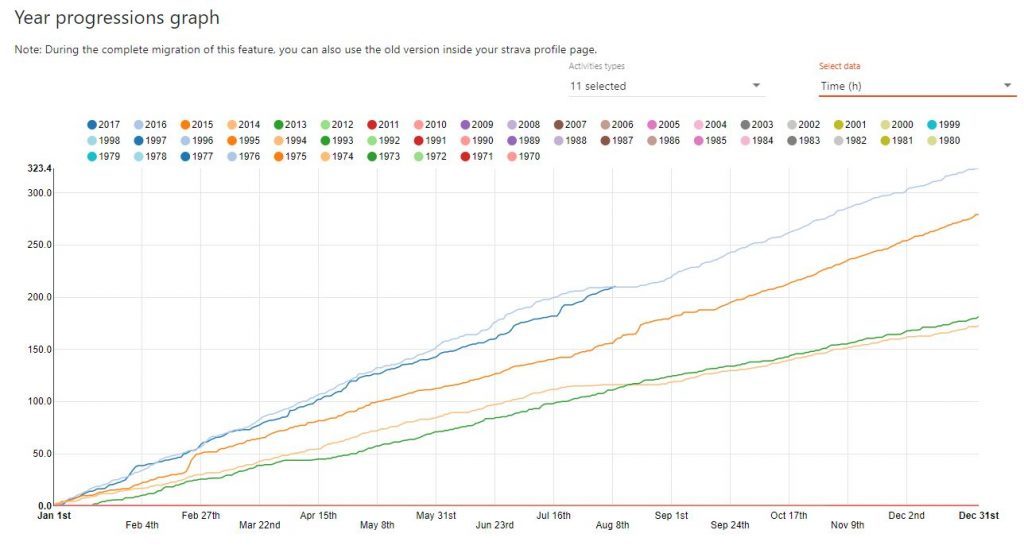
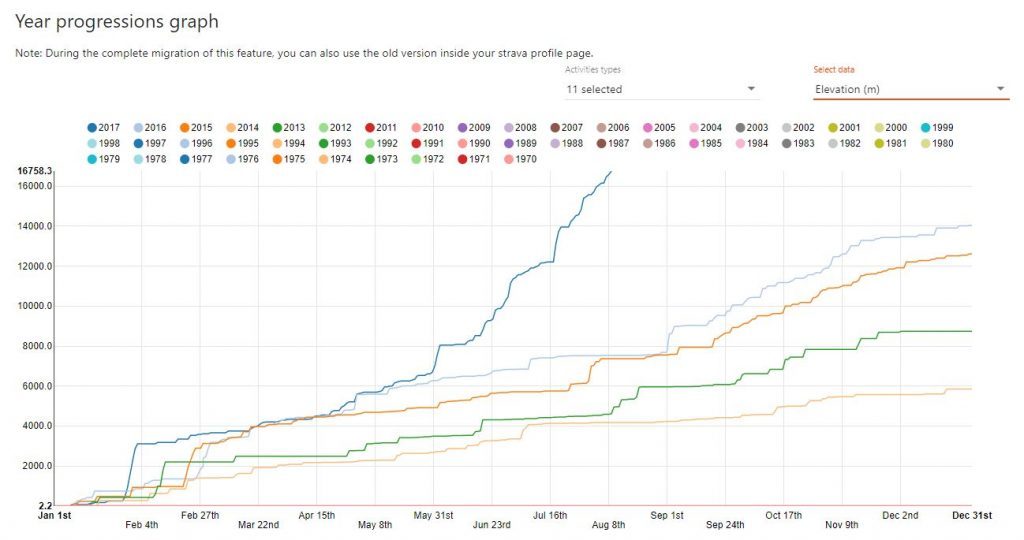
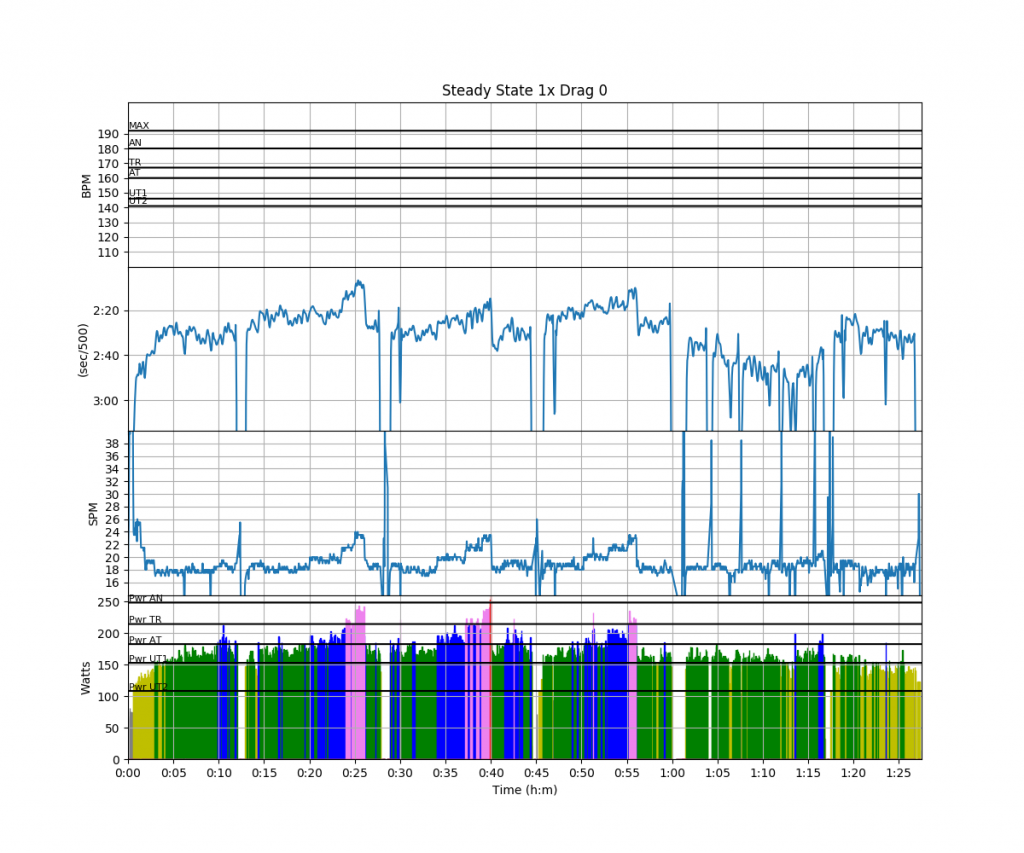
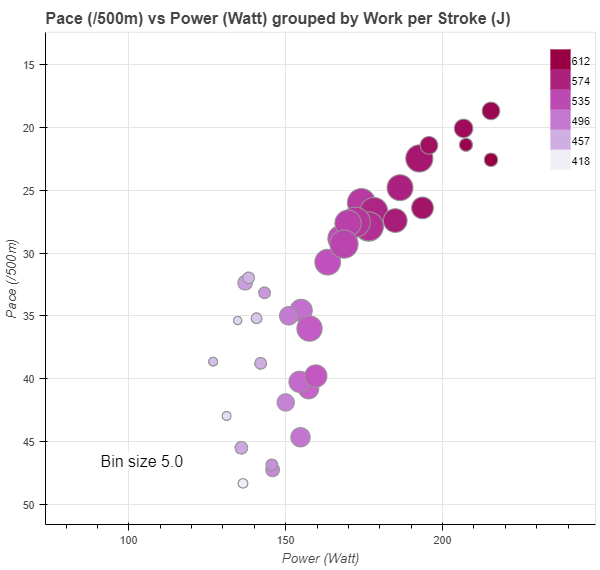
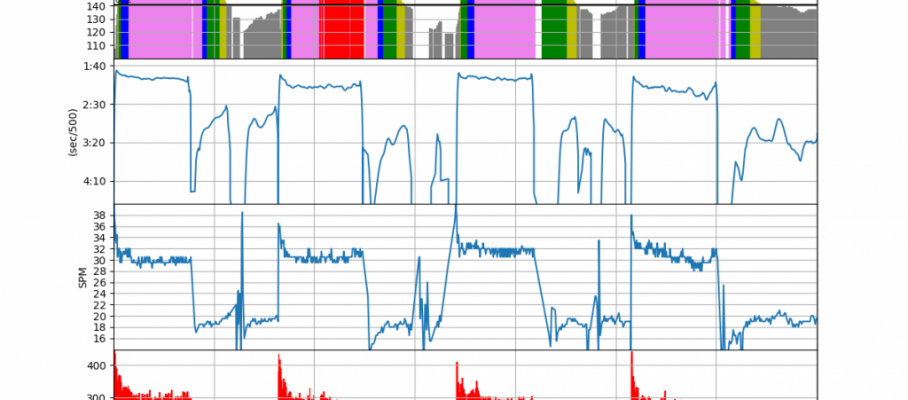

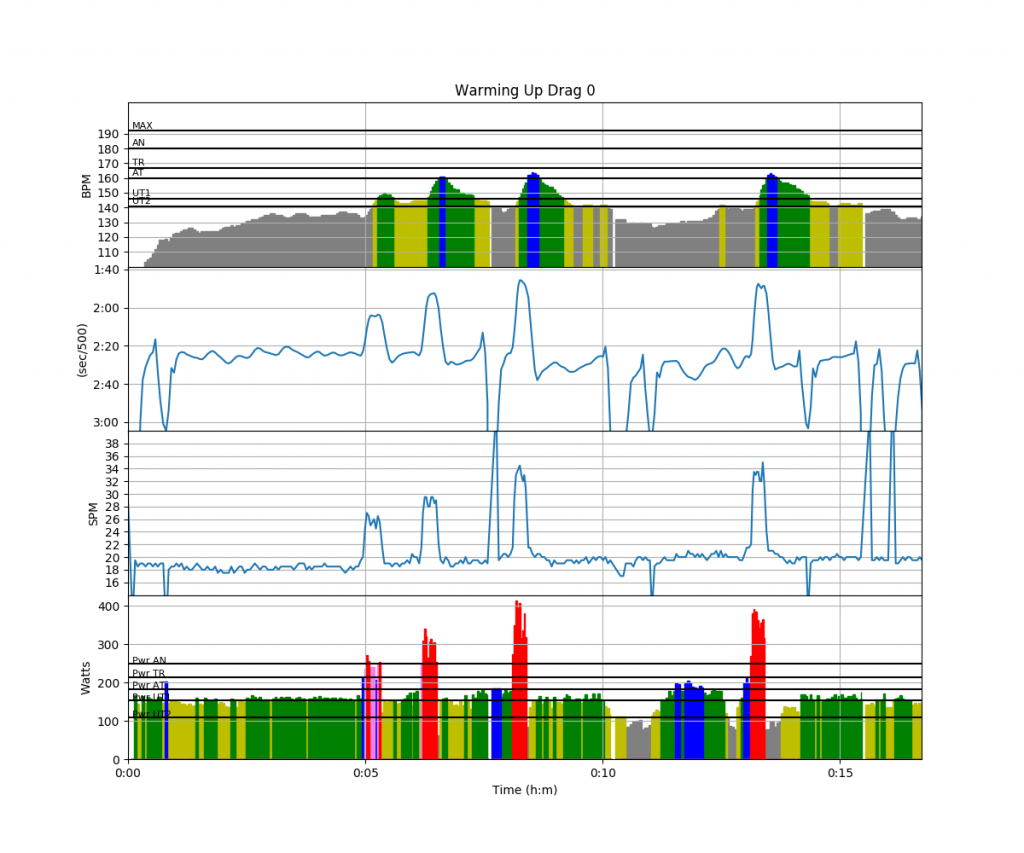
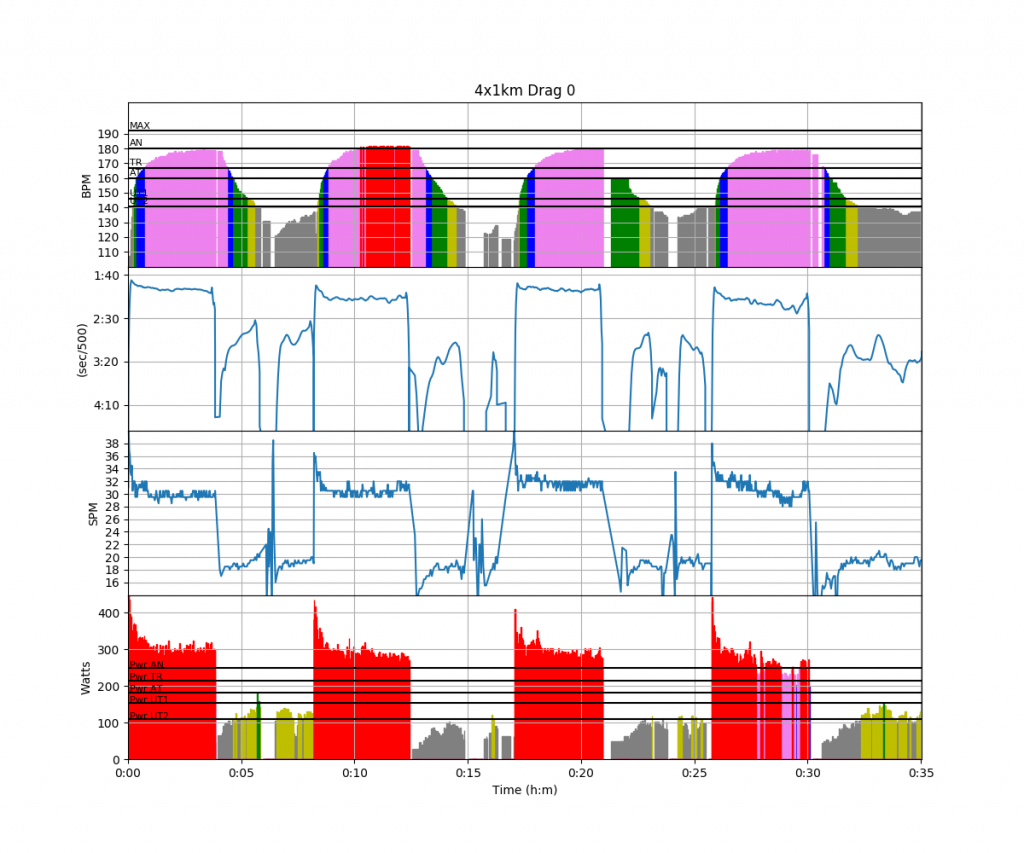
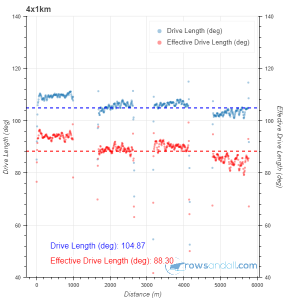
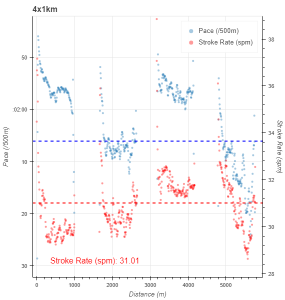
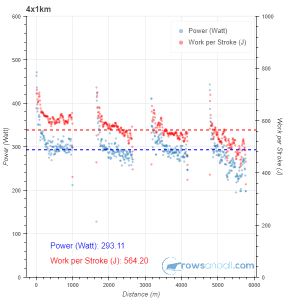
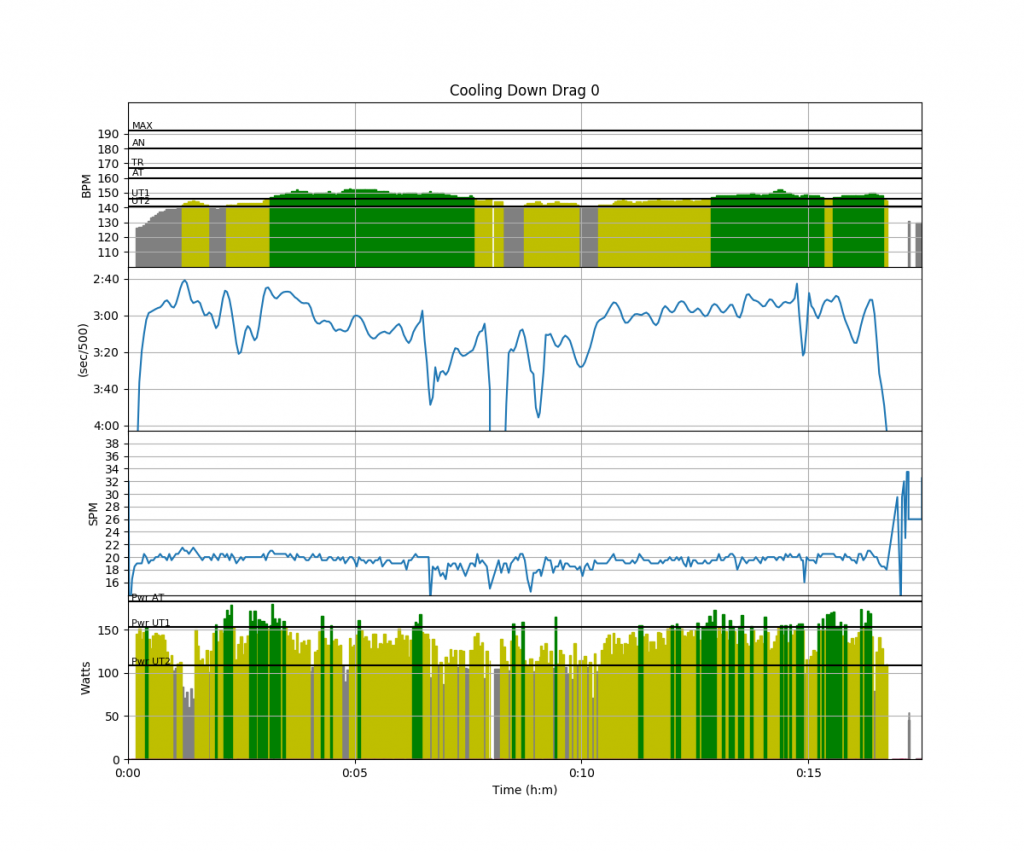
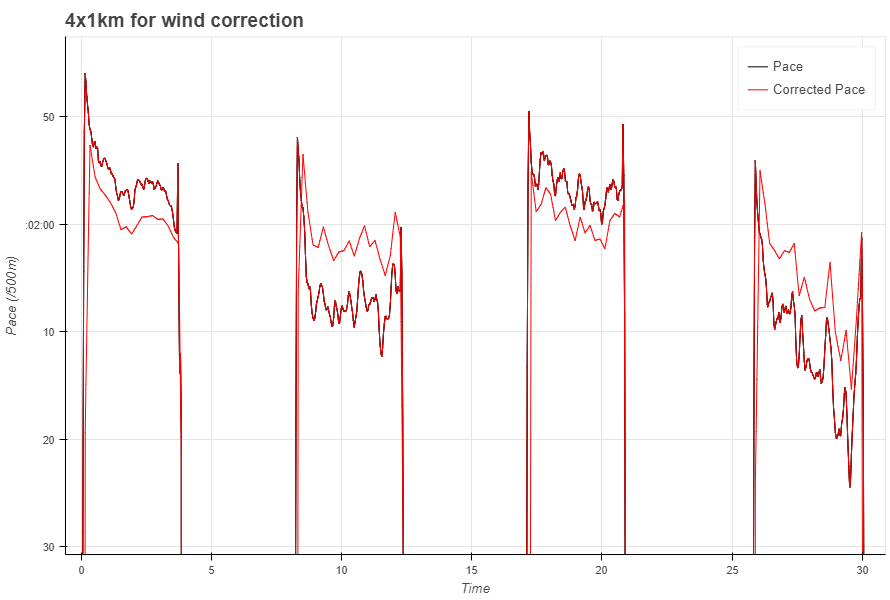
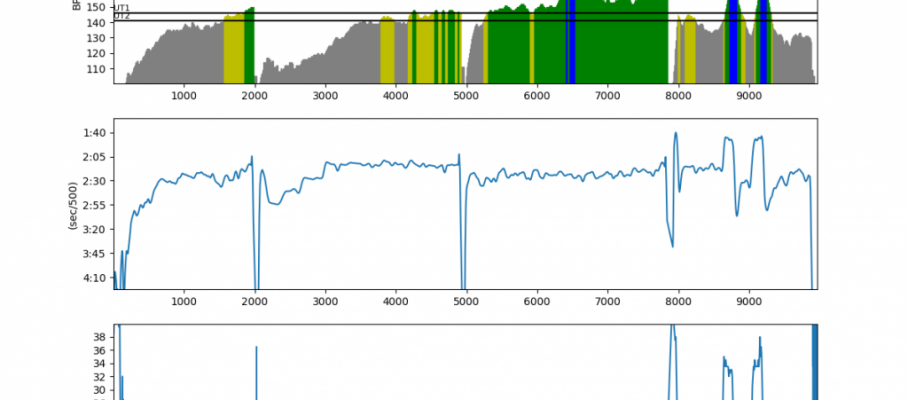
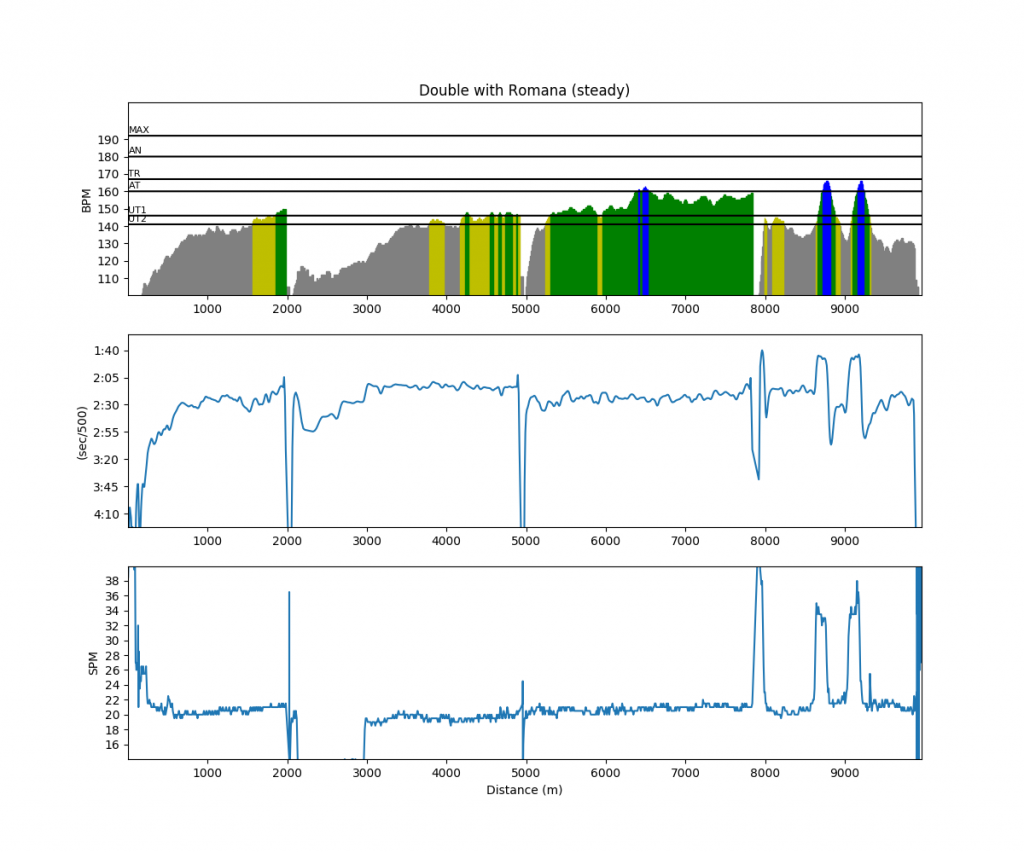
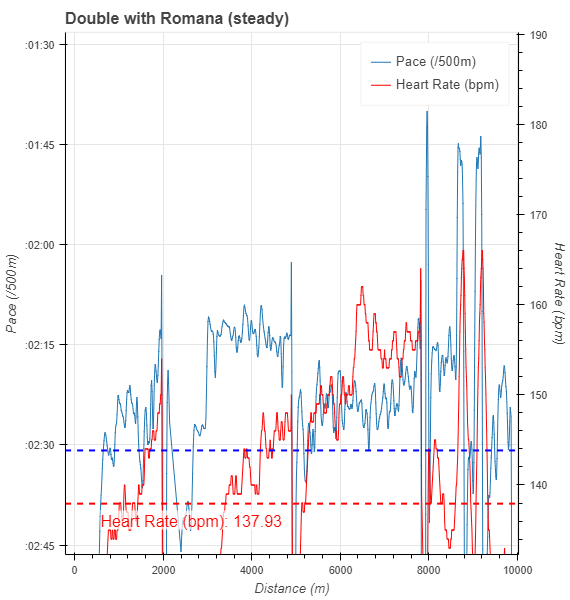
Aug 14 2017
Monday: 4x1km/5min – 16 minutes of pain
I didn’t do my weekend homework – so I had to get to work early and do it in the morning. Visits from the US and I got to play my boss. It all went very well, except that the A/C broke down in our building and it was 28 degrees in the meeting room. We should have moved to the patio, where it was just 26 degrees.
So after a long day I waved goodbye to my guests and headed to the rowing club. I was going to do a 4x1km and tried to get some of the Masters crews to row it alongside me, but nobody fancied this training. I don’t blame them. It is quite hard. But I am doing a mini cycle with threshold training and intensive distance, hoping it will move my anaerobic threshold a bit, which should help me at the Masters Worlds, if I manage to convert that to boat speed.
That’s the theory. Besides that, the 4x1km is just a hell of a session. The big advantage of rowing with a power meter is that you can take the average power of the last time as a target, and then try to improve. There is still a weather influence. It will be harder in choppy conditions, but it is still a lot more quantitative than trying to row to feel or a target pace.
I was tired and worried that I would have low grit to complete the session, but everything turned out better than expected. The target power was a bit lower than the first three intervals of last week (because the overall average was lowered by a dramatically slow fourth interval), so it was tough but doable, and I was able to focus on technique as well.
A slight additional difficulty was the fact that the place I chose to row the workout brought me in near collision course with big tourist boats on all intervals except the first one. In the second interval I managed to cross in front. In third and fourth interval I had to row through the wake. That explains short drops in power.
Interesting that my heart rate graph shows more red in the third interval. The fourth one was definitely a harder one.
Work Details
#-|SDist|-Split-|-SPace-|-SPM-|-Pwr-|AvgHR|MaxHR|DPS-
01|01000| 04:12 |02:06.2| 29.2| 293 | 169 | 180 | 8.1 - headwind
03|01000| 03:58 |01:59.0| 30.5| 294 | 173 | 181 | 8.3 - tailwind
05|01000| 04:08 |02:04.4| 30.6| 292 | 173 | 182 | 7.9 - headwind
07|01000| 03:57 |01:58.5| 31.1| 296 | 172 | 183 | 8.1 - tailwind
I set average pace on the lower right of my SpeedCoach and rowed this like an ergo training. Static start. Off you go, a few start strokes, then drop the pace immediately. Row slightly under the target until the average power hits target, then keep holding target power.
Here are the metrics charts. I include all of my regular ones this time. You can click on one of them to see a bigger version and then browse through the image gallery. The point I am trying to make is that it looks like pretty consistent rowing.
I am still fascinated by the trend flex charts. Here is this row, pace vs power, split by stroke rate:
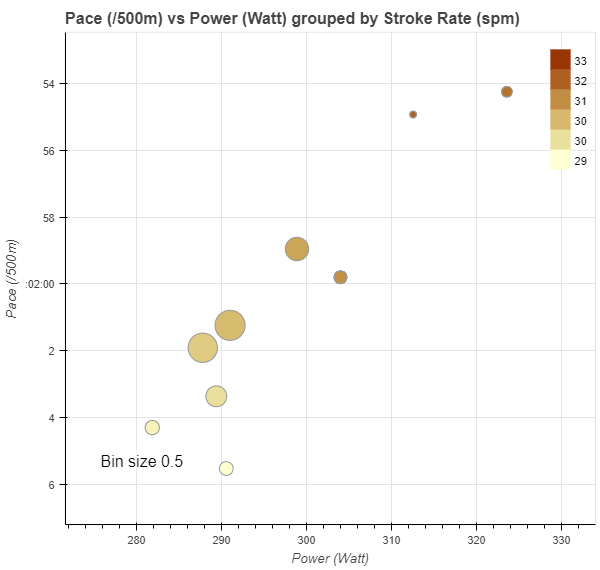 For comparison, here is the power/pace behavior with every individual workout stroke:
For comparison, here is the power/pace behavior with every individual workout stroke:
Most of those high stroke rate strokes are from the final 250m in the final interval:
Those 250m really really hurt. I think I haven’t been that deep in the pain box in training, recently. Again, that is the power of training with a power meter. Having a target and wanting to improve is what really kept me going.
I improved by 1 Watt. One tiny Watt. In terms of energy expended, that is 1/200th of an Apple. The progress is that the way I rowed it, it felt easier.
By sanderroosendaal • Uncategorized • 0 • Tags: 4x1k, 4x1km, intervals, lake, OTW, rowing, single, threshold, training